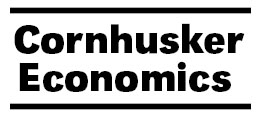Agricultural Economics, Department of

Cornhusker Economics
Date of this Version
7-17-2024
Document Type
Newsletter Issue
Citation
Cornhusker Economics (July 17, 2024)
Institute of Agriculture and Natural Resources, University of Nebraska-Lincoln
Abstract
In 2014, the Annual Forage Insurance Program (AFIP) was offered for the first time by the USDA – Risk Management Agency (RMA) as a pilot program for the states of Nebraska, North Dakota, South Dakota, Kansas, Oklahoma, and Texas. It was expanded to include Colorado in 2016 and New Mexico in 2017. This year marks the 10-year anniversary of the program, and the goal of this article is to provide a summary of where the program is and how it is being used. We will focus specific attention on Nebraska but also provide an overview of the national picture.
The AFIP is designed to meet production risk management needs related to precipitation risk for producers planting annual forage crops for use as livestock feed or fodder. This includes but is not limited to grazing, haying, grazing/haying, grain/grazing, green chop, grazing/green chop, or silage. Like Pasture, Rangeland and Forage insurance (PRF), the AFIP is based on rainfall index data provided by the National Oceanic and Atmospheric Administration Climate Prediction Center (NOAA CPC).
Included in
Agribusiness Commons, Agricultural Economics Commons, Animal Sciences Commons, Insurance Commons

